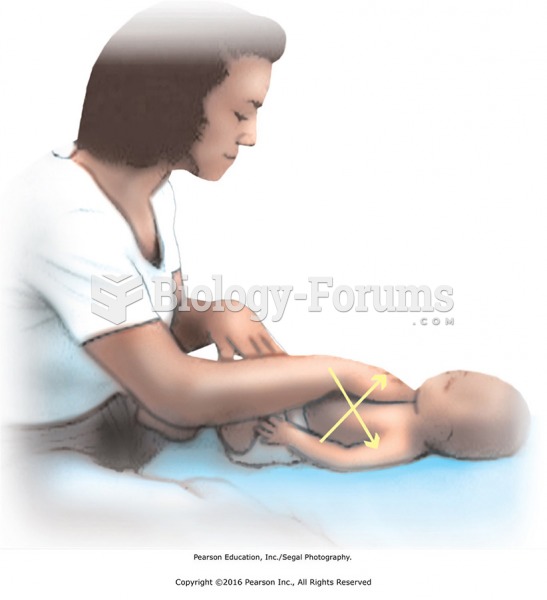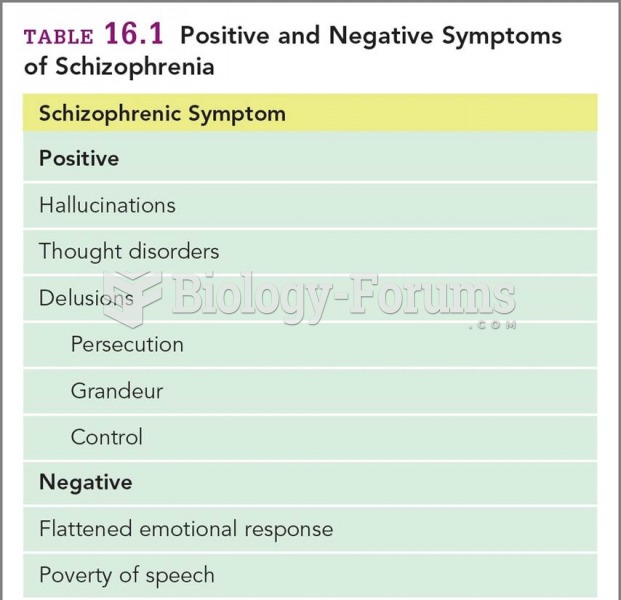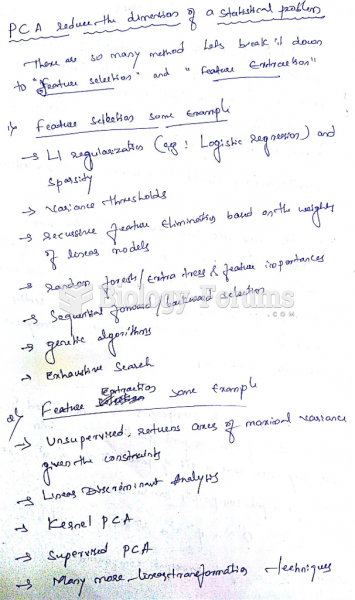|
|
|
People with high total cholesterol have about two times the risk for heart disease as people with ideal levels.
Alzheimer's disease affects only about 10% of people older than 65 years of age. Most forms of decreased mental function and dementia are caused by disuse (letting the mind get lazy).
The training of an anesthesiologist typically requires four years of college, 4 years of medical school, 1 year of internship, and 3 years of residency.
Adolescents often feel clumsy during puberty because during this time of development, their hands and feet grow faster than their arms and legs do. The body is therefore out of proportion. One out of five adolescents actually experiences growing pains during this period.
It is important to read food labels and choose foods with low cholesterol and saturated trans fat. You should limit saturated fat to no higher than 6% of daily calories.
 Common skin signs are often evidence of an illness or disorder. A nodule is a larger papule; acne ...
Common skin signs are often evidence of an illness or disorder. A nodule is a larger papule; acne ...
 Using the palm, apply oil with butterfly strokes across the chest. Alternate hands and move across ...
Using the palm, apply oil with butterfly strokes across the chest. Alternate hands and move across ...





